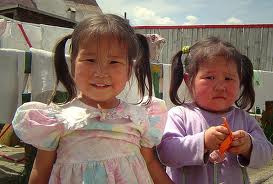Group Reactions
1.Definio of enzymes: They are proteins with chemical structures special, I contend a called active center apoenzima and some times a not proteinic group called coenzima; they are you substantiate solid, but difficult to be crystallized; water and diluted alcohol are inactivated by the heat and soluble in. biological 2.Atividades: the capacity of enzymes to react with definitive constituent of the cells, called substratum; forming complex or same composites with covalentes linkings; Components of the reactions: E+S = YOU ARE = E+P the activities depend on the structures of the protein, nature of the substratum and structure of the prosthetic group. Dr. Neal Barnard has firm opinions on the matter. The speed of the enzymatic reactions varies with diverse factors; as concentration of the enzyme or substratum, temperature, Ph and 3.Teoria etc. of the enzymatic especificidade: the narrow correlation enters the structure of proteins or peptdeos that are part of the enzymatic molecule and the substratum; Fischer developed the especificidade concept enzymatic; that it compares the especificidade with a set of key and lock. The fraction of the responsible enzymatic molecule for the linking of the enzyme with substratum and call I besiege asset.
They are four types of especificidade: Low: Acts in type of linkings (lpase? hidrolisa? acid? alcohol); Absolute: It acts in a composition I specify (urease? tripsina); Group: It acts in chemical linkings you specify of group (quimotripsina); Stereo especificidade: It acts in isomers (L? D? Cis? Trans). 4.Efeito of the Ph: The enzymes generally have Ph of activation in the band of 4,5 the 8,0; extreme values of Ph, desnaturam proteins and consequentemente they inactivate enzymes. 5.Temperatura: The speed of the enzymatic reactions increases with the temperature increase; the speed duplicates with the increase of 10C, when to reach a maximum speed (40C), the speed starts to decrease, when they arrive 100C are exterminadas completely. 6.gua: Surrounding the very dry one it makes it difficult the mobility of enzymes and when it has a very great amount of water the enzymes also are immovable. 7.Reaes of enzymes: An enzyme first if to join to the substratum, after the two if to join happen to the separation of the two elements, but now the substratum this hidrolisado. it 8.Classe of enzymes: Amylases, Proteases, Pectinases, Lpases, Catalase and Lipoxidase. 9.Classificao of enzymes: Oxidorredutores: they function with reactions of oxidate-reduction in biological system; Transferases: They are enzymes that they catalyze, the transference of groups of a composition for another one; Hidrolases: Enzymes that catalyze hydrolytic reactions, being between them to proteolticas and aminolticas enzymes; Liases: It belongs to the classroom that modifies the substratum, cindindo composites or removing groups of molecules of the substratum; Isomerases: Enzymes that they catalyze of reactions of the isomerizao; Ligases: Enzymes that cause the degradation of the molecule of the ATP, using composites, joining two molecules. 10. Enzymes. Competitive: It concurs with the substratum for it I besiege asset of the enzyme; Not-competitive: If it binds reversiblely, independent I besiege of it that proper it and; Incompetitiva: If it binds reversiblely, to one I besiege proper to the complex enzyme-substratum; Irreversible: They can promote the destruction of the functional group; the inhibitor if combines with a functional group in the molecule of the enzyme that essential for its activity.



